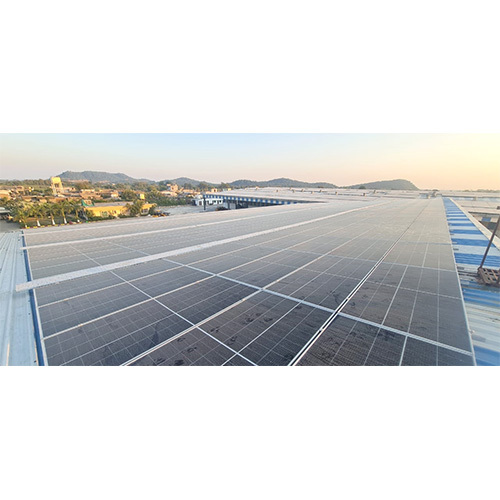
300 KWP Solar Power Plant
Product Details:
- Material Monocrystalline
- Switch Mode Automatic Switch
- Size Different Available
- Click to View more
300 KWP Solar Power Plant Price And Quantity
- 150000 INR/Unit
- 10 Unit
300 KWP Solar Power Plant Product Specifications
- Monocrystalline
- Automatic Switch
- Different Available
300 KWP Solar Power Plant Trade Information
- Cash Advance (CA)
- 100 Unit Per Month
- 10 Days
- All India
Product Description
A solar energy system with a peak power capacity of 300 kilowatts (kW) is referred to as a 300 kilowatt peak (kWp) solar power plant. It can be used for a variety of purposes, such as industrial, commercial, or utility-scale systems, and is made to produce energy from sunlight.
Here are some essential characteristics and elements generally found in a 300 kWp solar power plant:
1. Photovoltaic (PV) modules, usually referred to as solar panels, are the main elements that transform sunlight into electricity. The quantity of panels needed is determined by the capacity, efficiency, and installation space of each individual panel. Crystalline silicon, either monocrystalline or polycrystalline, is the foundation of the most widely used solar panel technology.
2. Solar panels are mounted on mounting structures, such as rooftops or structures that are ground-mounted. The mounting systems firmly fix the panels while maximising their tilt and orientation for maximum solar energy absorption.
3. The inverter transforms the direct current (DC) electricity produced by the solar panels into alternating current (AC), which is the kind of electricity used in the majority of electrical equipment. For the solar power plant, inverters perform control and monitoring duties as well.
4. Electrical wire, circuit breakers, and other safety equipment are used to connect the solar panels, which is known as the balance of the system (BoS). Combiner boxes, surge protectors, monitoring systems, and metres make up the remaining system parts.
5. System Connection: In most cases, the solar power plant is linked to the neighbourhood electrical system, allowing the electricity produced to be fed into the grid. A bi-directional metre that measures the electricity generated and used from the grid is typically used to establish the connection at an interconnection point.
6. The performance of the solar power plant, the amount of electricity it produces, and other factors are frequently tracked by a monitoring and control system. This aids in problem identification, system efficiency optimisation, and plant operation as intended.
A 300 kWp solar power plant has the following advantages:
- Renewable Energy Production: The solar energy facility produces clean, renewable energy, which lessens dependency on fossil fuels and helps to reduce carbon emissions.
- Savings: The solar power plant can dramatically lower energy costs by producing electricity locally, especially if there are advantageous feed-in tariffs or net metering laws in effect.
- Environmental Impact: Solar energy is a sustainable energy source that lessens air pollution brought on by conventional power generation and helps to slow down global warming.
- Long-Term Investment: Solar power plants can potentially save money during their estimated 25-year lifespan, making them a reliable source of electricity.
Other Products in 'Solar Power Plant' category
 |
PN AUTOMATION AND ENERGY SOLUTIONS
All Rights Reserved.(Terms of Use) Developed and Managed by Infocom Network Private Limited. |
 English
English Spanish
Spanish French
French German
German Italian
Italian Chinese (Simplified)
Chinese (Simplified) Japanese
Japanese Korean
Korean Arabic
Arabic Portuguese
Portuguese









